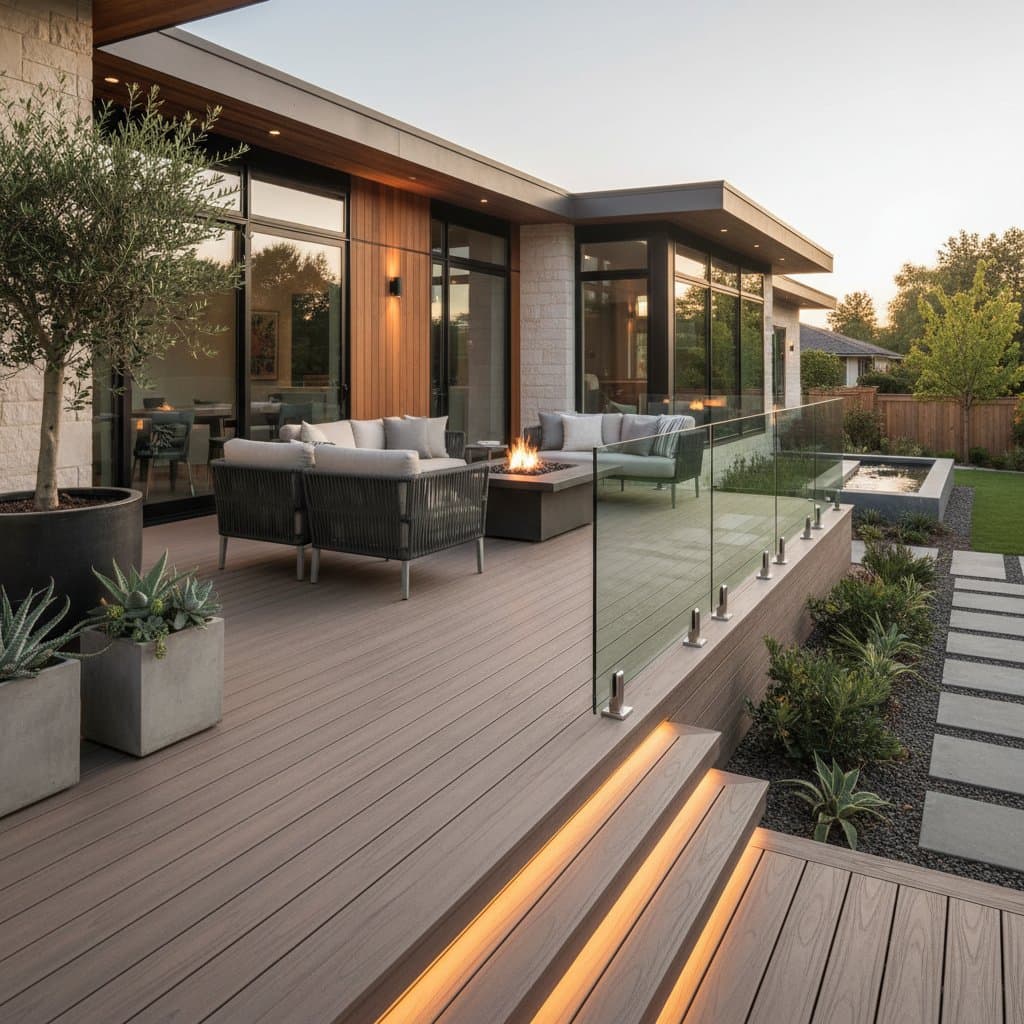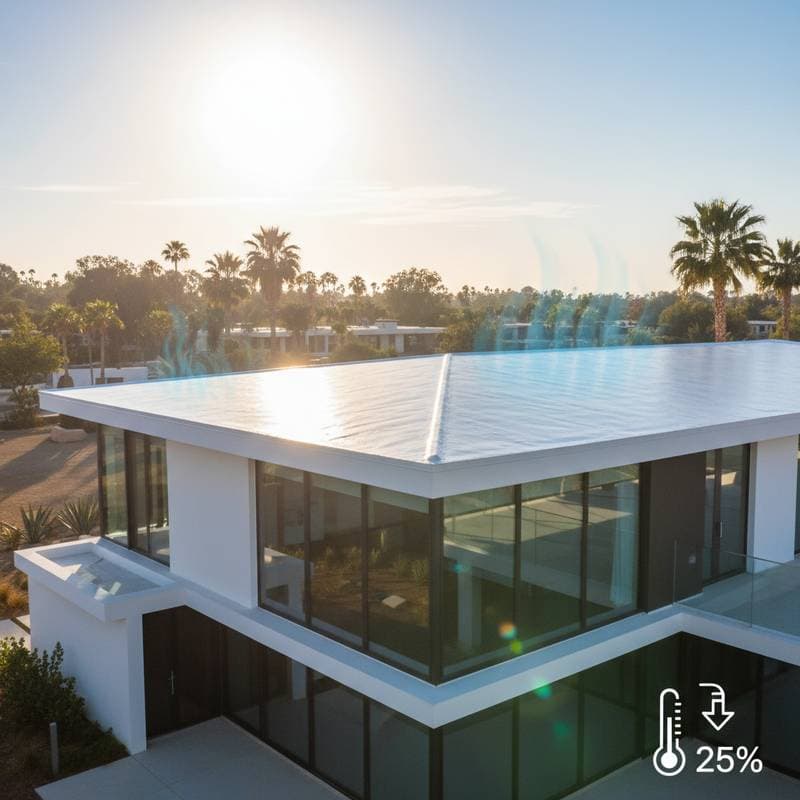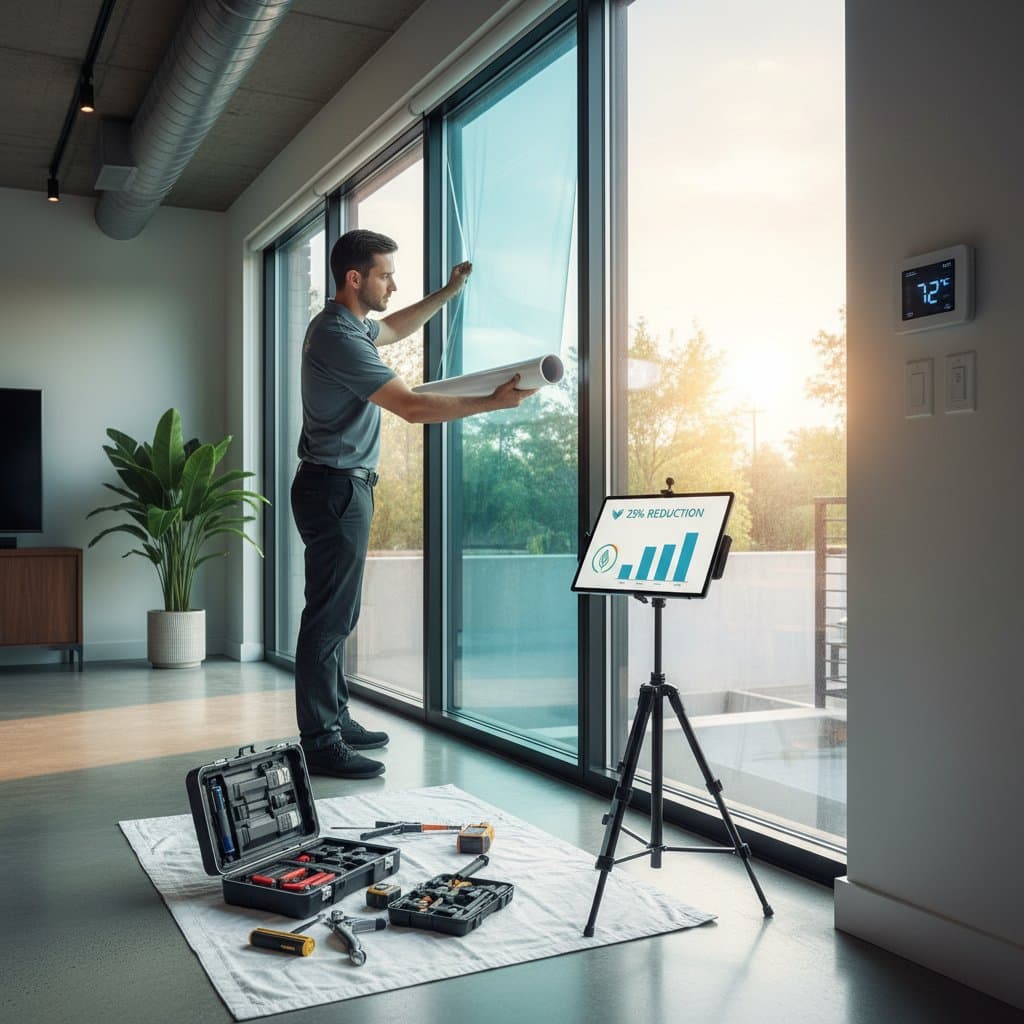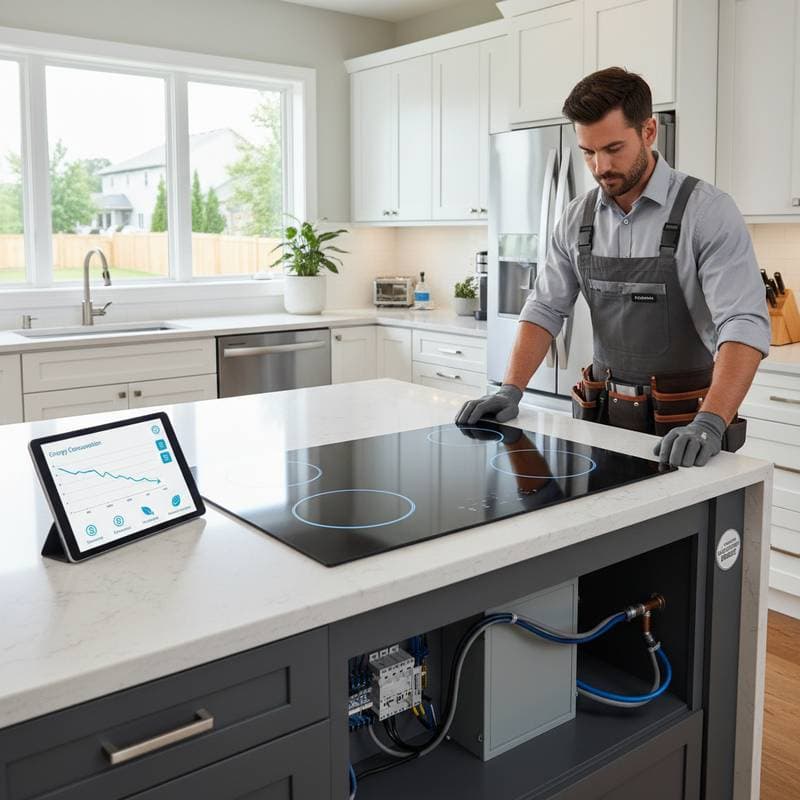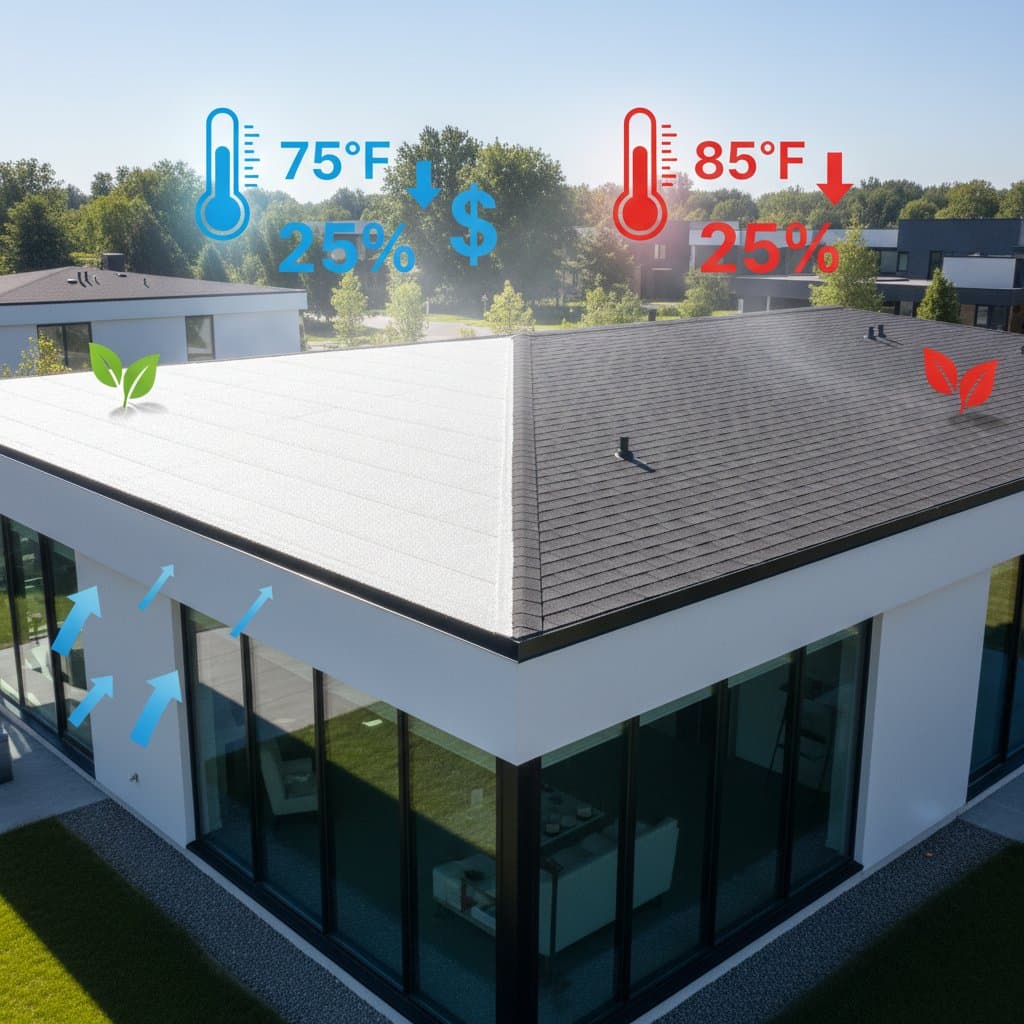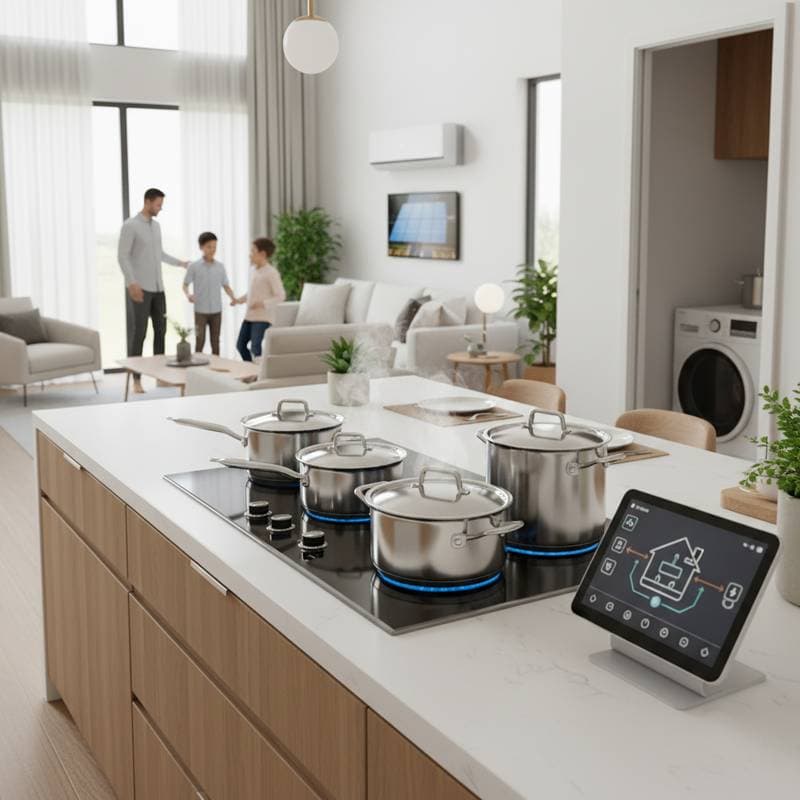Cool Roofs: Reduce Air Conditioning Costs by 25 Percent in a Key 2025 Trend
Summer heat transforms homes into uncomfortably warm spaces, forcing air conditioning units to operate continuously and driving up utility expenses. Cool roofs address this challenge by reflecting sunlight rather than absorbing it, which maintains lower indoor temperatures, decreases operational costs, and prolongs the lifespan of the roofing system.
Essential Benefits
- Cool roofs reduce air conditioning expenses by up to 25 percent, varying by regional climate and structure design.
- These materials lower roof surface temperatures by as much as 50 degrees Fahrenheit relative to standard dark shingles.
- Property owners typically recover their investment within five to seven years via energy reductions and enhanced roof durability.
- Local governments and utility providers frequently provide rebates and tax credits for reflective roof installations.
- Effective performance demands professional installation and regular upkeep to achieve optimal results.
Understanding the Underlying Science
Researchers from the Lawrence Berkeley National Laboratory indicate that cool roofs decrease cooling energy requirements by 10 to 25 percent in regions with high temperatures. In sunny locales, interior spaces often cool by two to five degrees Fahrenheit without adjustments to thermostat settings, easing the load on HVAC systems.
Owners of commercial properties experience substantial gains as well. On expansive flat roofs common in warehouses and retail facilities, reflective surfaces significantly moderate internal heat buildup, which lessens reliance on energy-intensive cooling equipment. Savings scale directly with the size of the roof area, amplifying financial returns for larger installations.
Environmentally, these roofs mitigate urban heat island phenomena by limiting heat retention in built environments. This action enhances overall air quality and alleviates pressure on municipal electrical infrastructures during peak demand periods.
Economic and Ecological Advantages
The economic rationale for adopting cool roofs proves strong. Residential users achieve 15 to 25 percent decreases in yearly cooling expenditures, influenced by factors such as geographic location and existing insulation quality. Commercial operators secure even greater reductions due to the extensive surface areas involved.
Data from the Cool Roof Rating Council reveals that each square foot of reflective material conserves up to 0.20 kilowatt-hours of electricity over a typical cooling season. For a standard 2,000-square-foot residence, this equates to annual savings of several hundred dollars, depending on local electricity rates.
Calculating Return on Investment
Initial costs vary by material and installation complexity, but energy efficiencies quickly offset expenses. For instance, a homeowner in a hot climate might save $300 annually on cooling, leading to full payback in under six years when combined with potential rebates. Extended roof longevity further bolsters this timeline by reducing future replacement needs.
Thermal stability plays a critical role here. Cool roofs experience fewer cycles of expansion and contraction from heat fluctuations, which prevents material fatigue, cracks, and blistering. As a result, roofs endure 10 to 20 years longer than conventional options, deferring major capital outlays.
Broader Environmental Contributions
By curbing peak electricity usage, cool roofs support reduced fossil fuel consumption at power generation facilities. The U.S. Department of Energy projects that broad implementation could prevent millions of tons of carbon dioxide emissions each year. In urban settings, this translates to cooler street-level temperatures, benefiting public health and decreasing heat-related medical incidents.
Ensuring Longevity Through Maintenance
To sustain energy-saving capabilities, cool roofs necessitate routine care, as accumulated debris can impair reflectivity. Property owners should integrate these practices into their annual home maintenance plans.
Recommended Cleaning Practices
Rinse surfaces with plain water or a gentle detergent solution every three to six months, particularly after heavy pollen seasons or dust storms. This simple step restores original reflectance without risking damage to protective coatings. Professional pressure washing suits larger commercial roofs, applied at low intensity to avoid surface erosion.
Regular Inspection Protocols
Conduct thorough checks once a year, focusing on seams, edges, and flashing for signs of wear such as cracks or peeling. Address minor issues immediately with compatible sealants to avert water intrusion and efficiency losses. Document findings to track performance trends over time.
Recoating for Sustained Performance
Coated reflective systems benefit from reapplication every 10 to 15 years, depending on exposure to weather elements. Select manufacturer-approved products to maintain warranty validity. This process not only revives reflectivity but also reinforces protection against UV degradation.
Addressing Persistent Myths
Misunderstandings continue to deter some potential adopters, yet evidence dispels these concerns effectively.
-
Myth: Cool roofs perform only in equatorial regions. In reality, benefits extend to any area with significant solar exposure, including moderate climates where summer cooling demands still yield notable reductions.
-
Myth: Light-colored roofs soil rapidly and appear unkempt. Contemporary formulations resist dirt adhesion, and routine cleaning preserves a clean aesthetic for extended periods without frequent effort.
-
Myth: Reflective surfaces create excessive glare for surroundings. Advanced diffusing technologies scatter light evenly, preventing mirror-like reflections that could affect visibility for adjacent properties or roadways.
-
Myth: Upfront expenses exceed long-term value. Although initial investments may surpass basic roofing, incentives and savings recoup costs swiftly, often within three to five years for eligible projects.
Emerging Innovations and Market Directions
Advancements in roofing technology propel the sector forward, with new materials enhancing adaptability and efficiency. Nanoceramic coatings provide superior heat rejection while resisting abrasion, ideal for high-traffic commercial applications. Phase-change materials embedded in shingles absorb excess heat during the day and release it at night, stabilizing temperatures dynamically.
Smart pigments represent another breakthrough, altering reflectivity based on environmental cues to optimize performance across seasons. For example, coatings that darken in winter to capture solar warmth complement summer cooling. These innovations lower overall energy profiles for buildings in variable climates.
On a societal level, urban development initiatives increasingly mandate cool roofs in new constructions and retrofits. Such policies aim to combat rising temperatures from climate change, potentially cooling city averages by two to four degrees Fahrenheit. This approach not only cuts energy demands but also fortifies infrastructure against extreme weather events.
Steps to Implement Cool Roof Solutions
Homeowners and business managers can begin by assessing current roof conditions and local rebate programs through utility websites or municipal offices. Consult certified installers familiar with Cool Roof Rating Council standards to select materials suited to specific needs, such as steep residential pitches or flat commercial expanses.
Budget for professional evaluation, which includes energy audits to quantify potential savings. Track post-installation performance with utility bill comparisons and temperature monitoring to verify benefits. Engage in community efforts, like neighborhood cool roof campaigns, to amplify collective impacts on local environments.
Building a Cooler Tomorrow
Cool roofs offer a straightforward strategy for managing rising energy costs amid intensifying heat. They deliver tangible reductions in air conditioning reliance while fostering ecological resilience. Property owners who adopt this technology position themselves for financial security and contribute to broader sustainability goals, ensuring comfortable spaces in an era of climate variability.

